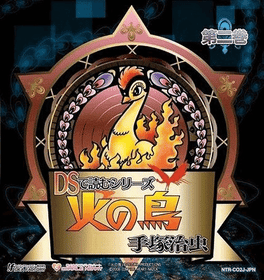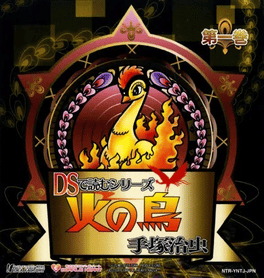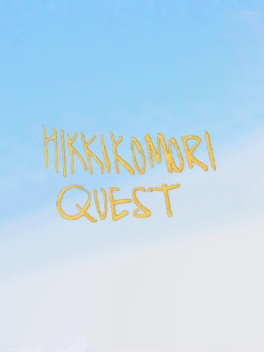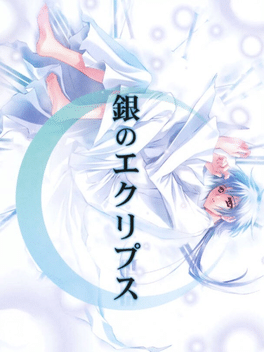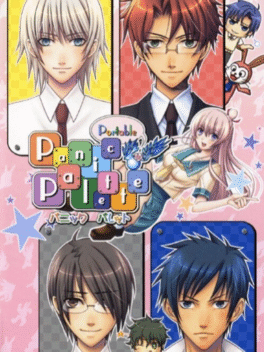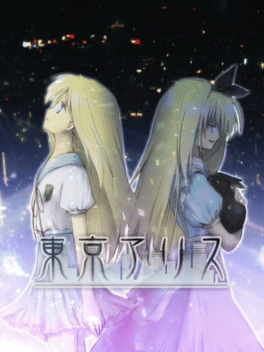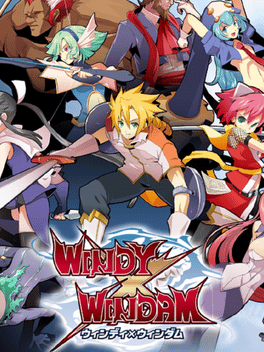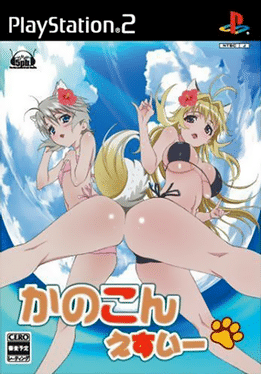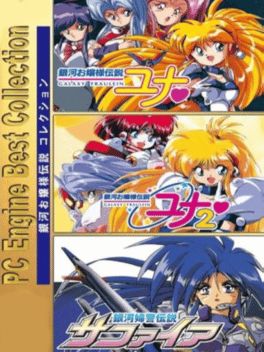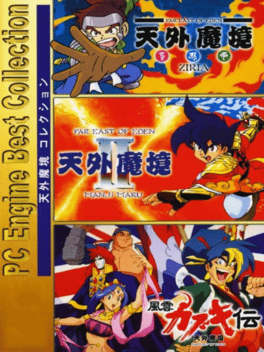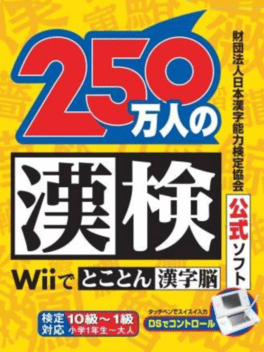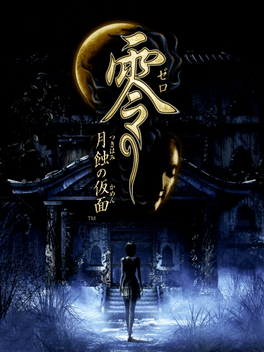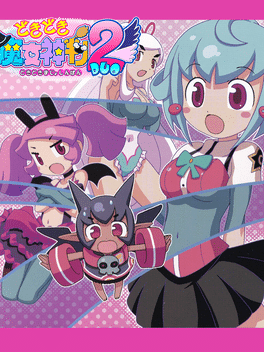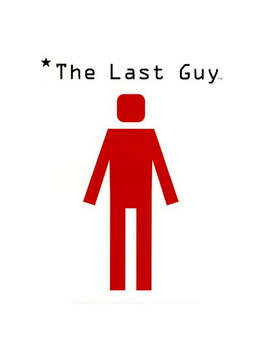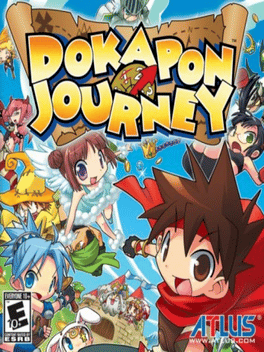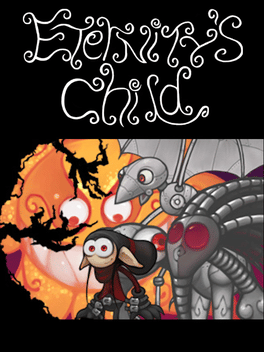New Games - Page 9936
-
DS de Yomu Series: Tezuka Osamu Hi no Tori 2
2008
Volume 2 (Resurrection, Nostalgia, Civil War, Robe of Feathers) of the "Hi no Tori" manga series created by Osamu Tezuka. It consists of 12 books, each of which tells a separate, self-contained story and takes place in a different era. The plots go back and forth from the remote future to prehistoric times. -
DS de Yomu Series: Tezuka Osamu Hi no Tori 1
2008
Volume 1 (Dawn, Future, Yamato/Space, Karma) of the "Hi no Tori" manga series created by Osamu Tezuka. It consists of 12 books, each of which tells a separate, self-contained story and takes place in a different era. The plots go back and forth from the remote future to prehistoric times. -
Hikkikomori Quest
2008
Hikkikomori Quest
2008
Hikkikomori Quest is an RPG where the player controls a reclusive individual who has not left his house for a year. When he eventually runs out of food, he seeks help at the website 4chan but they only mock him, so he decides to finally venture outside and buy food. With the help of a sarcastic tutorial owl he has to search for a 9 eleven shop. Once inside however, he is incapable of purchasing the food and his mind transforms the shop into a dungeon where he has to fight cans of soft drinks and hot dogs. The game consists of four main dungeons with a final boss and alternate endings based on some decisions in the game. The character's basic attack is screaming, but after gaining experience he can learn new talents. While walking around he is dragged into random battles where he can also choose to run away. The statistics are based on energy and stamina. Saving is done by writing a livejournal blog entry and he shop online at Amazon. There are also some vending machines to buy drinks that replenish stamina. Other -
Mamegoma 2: Uchi no Ko ga Ichiban!
2008
This time, a very cute “Baby Mamegoma” is newly introduced! In addition, you will be able to keep two animals at the same time, so you can enjoy watching the Mamegoma parent and child playing together. In addition, "Mamegoma", which swims smoothly in the water, will be unveiled for the first time! The sight of Mamegoma, which is relaxing on the ground, swimming around freely is a moving sight! Daily care such as feeding and cleaning is very easy! If you teach it words, it will show you various poses! There are a total of 32 types of Mamegoma that appear in the game! Why don't you grow your favorite Mamegoma? -
Gin no Eclipse
2008
-
Panic Palette Portable
2008
Panic Palette Portable is a port of Panic Palette for PlayStation Portable. -
Tokyo Alice
2008
-
Windy x Windam
2008
Windy x Windam
2008
Notable solely for being "That Fighting Game with Izuna and Shino in it", Windy X Windam is a Nintendo DS Fighting Game by Ninja Studio starring (or "co-starring", if you prefer) seven fighters from a remote island kingdom called Gawain, a place where people empowered with devices called "Windies" are given the ability to fly. They, along with a mysterious "eighth" malefactor, have assembled for a tournament, wherein the winner will have his/her one greatest wish granted. Aside from the flight and special attacks granted by their devices, the fighters also have the ability to transform (for a very brief period of time) into a more powerful form. -
Kanokon: Esuii
2008
Kanokon: Esuii
2008
Kanokon SE is a romantic comedy adventure game based on the Kanokon TV anime but with an original story and scenario. Originally released for PS2 console, this game was a non-adult from the start. As a visual novel adventure game, the gameplay and visual style is similar to any other title from its genre. Much like in EVE series, the game features a viewpoint change which switches between the two main characters who came to an isolated island during summer vacation. -
The Murder of Adrian Elkwood
2008
A Point And Click Adventure Game created by Dylan Downing as part of the Reality-On-The-Norm project. -
PC Engine Best Collection: Tengai Makyou Collection
2008
PC Engine Best Collection: Tengai Makyou Collection is a videogames compilation including: - Far East of Eden: Ziria (1989) - Far East of Eden II: Manjimaru (1992) - Far East of Eden: Fuun Kabukiden (1993) - Far East of Eden: Kabuki Ittou Ryoudan (1995) -
250-man-nin no Kanken: Wii de Tokoton Kanji Nou
2008
An educational video game with the to assist users in learning to write Kanji. Because of the complexity of multi-stroke Kanji, the game allows the option to use a Nintendo DS for drawing. -
Drastic Killer
2008
Drastic Killer
2008
Drastic Killer is an otome game, developed by Tenky and published by Bandai Namco Games, which was released in Japan in 2008. -
Zero: Tsukihami no Kamen
2008
Ten years ago, a suspected serial killer has kidnapped five girls from a sanatorium located on Rogetsu Island in Japan. The detective Choshiro Kirishima eventually succeeded in pursuing the criminal and rescuing the girls. However, several years later, two of the girls died under mysterious circumstances. The three remaining girls - Ruka, Misaki, and Madoka - decide to return to the island to find out more about the kidnapping and retrieve their lost memories. Ruka's mother pleads Choshiro to follow them. One by one, the heroes venture into the dark haunted house... Zero: Tsukihami no Kamen is an installment in the Fatal Frame (Project Zero) series. The player switches between the four main protagonists as dictated by the story. As in the previous games, the characters use a camera to fend off hostile spirits. A new weapon is the Spirit Flashlight, a kind of torch that possesses the power to exorcise spirits with moonlight. Not all the spirits are hostile; the player is expected to differentiate between them, and -
The Last Guy
2008
The Last Guy
2008
star 7.7The Last Guy is a rescue game in which the eponymous player character must guide civilians to escape from monster-infested cities. -
Dokapon Journey
2008
Dokapon Journey
2008
star 8The Kingdom of Dokapon is in peril! Monsters have invaded, and the King has offered his crown and his daughter's hand in marriage to anyone who can save the land! Prepare to take down your friends or face off against the Nintendo DS in this race to save the Kingdom and win the throne! -
Eternity's Child
2008
Eternity's Child
2008
star 3Eternity's Child, a quirky, hand drawn next generation 2D platformer is based on a fairy tale by Luc Bernard. It arrives on Steam with exclusive Steam Only levels and HD Resolution.

